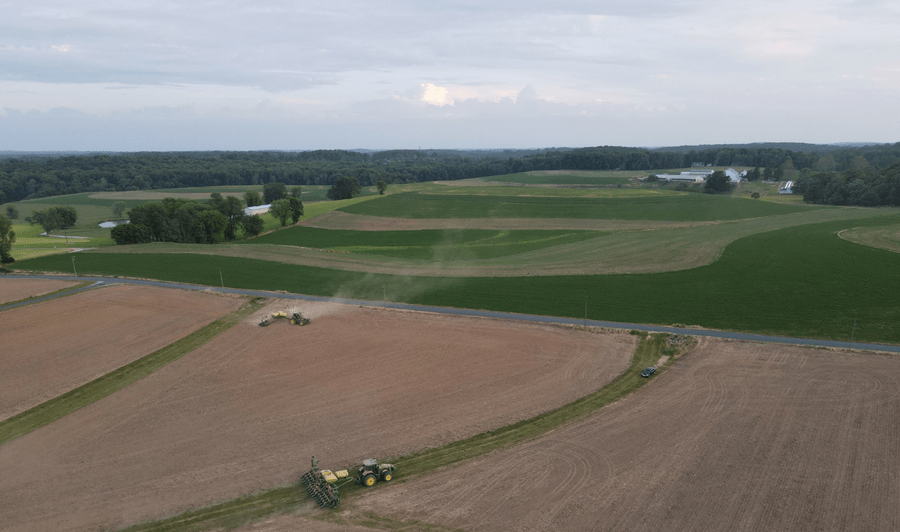State Court of Appeals Overturns Circuit Court’s Right-to-Farm Decision
As we move into late spring and early summer, the state’s Court of Appeals has clarified the state’s right-to-farm law application. In this decision, the court found that the state’s right-to-farm law protected a Maryland operation’s expanded use of soil conditioners and biosolids and did not trigger a resetting of the one-year provision in the law. At the same time, storing and applying nutrients was a generally accepted agricultural practice. The appeal was In the Matter of Cheryl Lewis. It should be noted that the neighbors can still appeal the decision to the state’s supreme court.
Background
The farmland was purchased in March of 2020, and it’s unclear from the court’s opinion what the land was being used before the current owners purchased it. The neighbors began to complain in September 2021 about the odors and other concerns from the soil conditioners being utilized by the owners. The Talbot County Agricultural Resolution Board held two hearings on the complaints in late February 2022 and mid-November 2022. The Board found that the soil conditioners had been applied and stored on the farmland since the fall of 2021. The Board found the storage and application of the solid conditioners to be a generally accepted agricultural practice and that the farmland had been used continuously for more than one year. The Circuit Court of Talbot County reversed the board’s decision, finding the right-to- farm law did not apply. This appeal followed.
Court’s Decision
On appeal, the court reviews the agency decision (the Talbot County Ag Reconciliation Board) to determine if there is substantial evidence to support the board’s decision. The operation argued that the Board correctly determined that the operation had been underway for more than one year, as required by the right-to-farm law. The neighbors argued that the transition to biosolids as a fertilizer reset the one-year provision. In looking at the current law, the law requires the operation “[i]f an agricultural, a silvicultural, or a commercial fishing or seafood operation has been under way for a period of 1 year or more[.]” The court found this language ambiguous when an agricultural operation changes practices.
Turning to the legislative history, the court found that the General Assembly had addressed this issue. In 1981, the General Assembly enacted the law requiring changes to the operation to reset the one-year provision. In 1998, the General Assembly amended the law to remove the provision, resetting the one-year period when changes happened to the operation. According to the General Assembly, the change would allow operations to change practices without losing liability protections.
To the court, the plain language showed that changing the operation would not lose the protections of the right-to-farm law. It should be noted that the court highlighted portions of the legislative history that showed that a dairy farm could switch from dairy to poultry without losing the law’s protections. To the court, the law only required that land be used continuously for some kind of agricultural operation. In this case, the law protected the farm’s expanded use of soil conditioners and biosolids.
Next, the court turned to the did storage and land application of the biosolids and soil conditioners on the farm and related farms operated by the operator to meet the requirements of a generally accepted agricultural practice in the Talbot County Code. To the court, there was substantial evidence to support the board’s decision. The relevant definition for an agricultural operation in the county code included spreading other soil nutrients. There was also considerable evidence that the practices did not violate neighbors’ public health, safety, and welfare. Any odor and pests associated with storing the nutrients were a generally accepted agricultural practice. Finally, there was evidence that the practice had been going on for over a year when the neighbors complained. For this reason, the court agreed that substantial evidence supported the board’s decision.
Why Care?
This decision marks the first time the Maryland Court of Appeal interpreted the state’s right-to-farm law. This decision helps provide a lot of clarity to Maryland operations, which are either looking to expand or change practices. Highlighting that the General Assembly intended to protect modifications. At the same time, it also highlights what is considered generally accepted. There might be odors and other issues that develop, but the practice should be covered as long as it is appropriately done. This decision could still be appealed to the Maryland Supreme Court, so we must wait to see if an appeal happens.
Reference
Matter of Lewis, No. 951, Sept. Term, 2023, 2024 WL 2763703 (Md. Ct. Spec. App. May 30, 2024).
This article appears in June 2024, Volume 15, Issue 3 of the Agronomy News.
